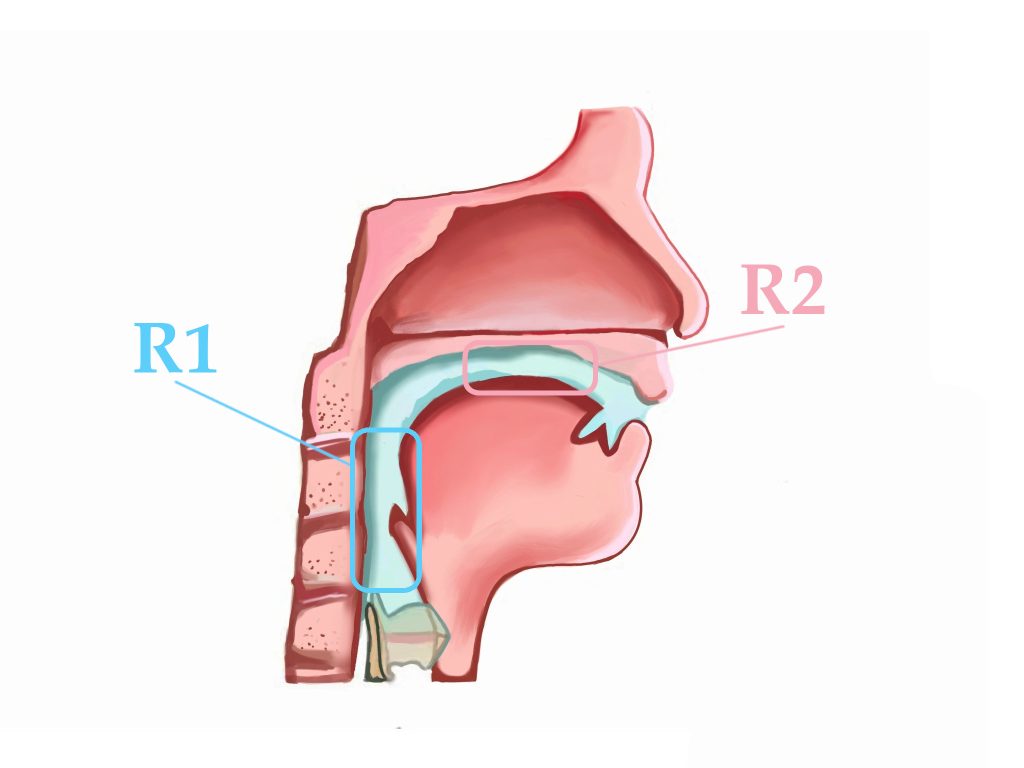R2: The Unsung Hero of Vocal Resonance
Hello, wonderful readers! I’m back to continue our thrilling journey through the vocal mechanism. If you remember our last discussion, we talked about the almighty R1, the primary gender control knob in your voice. But did you know there’s a “sidekick” to R1 that’s equally compelling? Meet R2, the area of your voice that resonates within your mouth.

What Exactly is R2?
You might be asking, “What’s so special about R2?” Well, R2 is the oral cavity—or in simpler terms, your mouth! Yes, the place where you chew your food, smile, and of course, talk, plays a significant role in how your voice sounds. Consider R2 as the secondary gender control knob, especially useful in voice training for both mtf (male to female) and ftm (female to male) trans individuals.
The Role of R2 in Vocal Style and Vowel Control
R2 is a vital player when it comes to vocal style and vowel sounds. For example, say the word “apple.” The ‘a’ sound resonates mainly in your mouth. That resonance is the job of R2!
Why is R2 Important in Gender Voice Training?
While R2 may be considered the “sidekick” to R1, it offers something unique—it can create a wide range of frequencies, from low to high pitch. What does this mean? It means R2 can create a vast array of sounds, adding complexity and depth to your voice.
The Tongue: The Captain of R2
Believe it or not, your tongue is the maestro that controls R2. More specifically, the tip of the tongue (the apex) and the center (the tongue body) govern this area. As your tongue moves while you speak or sing, it changes the space inside your mouth. Imagine your mouth as a room. When the tongue is lifted close to the roof, it’s like filling the room with furniture, making it smaller. When the tongue lies flat, it’s like an empty room—spacious and large.
How Can You Train R2?
You’ll be happy to know that, just like R1, R2 can be trained! Specific vocal exercises can help your tongue maintain certain positions, enabling you to create the frequencies you desire. This affects not only the perceived gender of your voice but also improves pronunciation and personal style.
A Simple Exercise
- Vowel Play: Say the vowels A, E, I, O, U slowly.
- Tongue Position: Pay attention to where your tongue is while pronouncing each vowel.
- Tongue Movement: Try lifting the tip of your tongue towards the roof of your mouth and observe how the sound changes.
- Mindfulness: Be aware of the different positions your tongue can take and the sounds it produces.
Remember, always consult with a qualified Speech-Language Pathologist (SLP) to guide you through these exercises.
Wrapping Up
Even though R2 might not be as critical as R1 in terms of gender voice training, it’s a treasure trove when it comes to the richness and variety of sound. Understanding and training R2 can make a world of difference, offering a fuller, richer vocal experience.
So there you have it! R2, while perhaps the Robin to R1’s Batman, is a superhero in its own right. It adds flavor, depth, and a unique style to your voice. After all, what’s Batman without Robin?
See you next time with more intriguing insights into the world of speech and voice!
